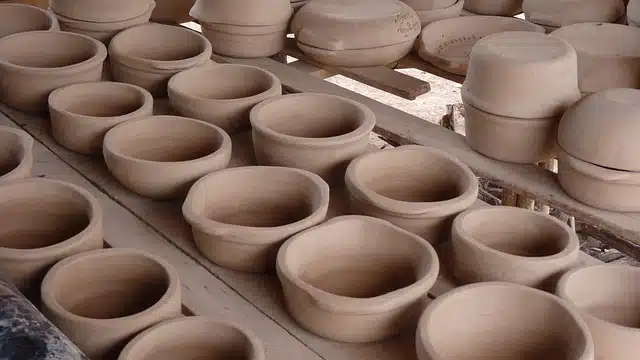
Levigation is a method of separating solid elements using a liquid.
Levigation is the act and result of levigating . This verb , whose etymological root is found in the Latin word levigāre (translatable as "pulverize" ), refers to dissolving a powdered matter in water with the aim of achieving the separation of its parts according to thickness .
industrial technique
With levigation, the thicker particles settle at the bottom of the container, being separated from the thinner particles. It is a technique that is used in different industrial areas.
For the development of levigation, the first thing to do is transform an insoluble matter into powder . This powder must be wetted with water or another lifting agent . Then, usually with the help of a mill, the incorporation of more water and the passage of the material through different tanks or containers, the separation is favored, although the process can also be carried out in a simpler way.
Levigation is similar to sedimentation . In the case of sedimentation, however, the spraying of the wet material is not used, but only agitation in water is generated.
In mining , for example, levigation is often used to separate minerals from gangues (the waste that is discarded). For this, the raw mineral is pulverized, a liquid is added and it is subjected to a stream of water. The gangue, having a lower density, is dragged away, while the mineral is deposited at the bottom since it is denser.
Complements sifting
These two concepts are often found in the same context, but they should not be understood as synonyms but as complements. Sieving is a physical method that uses a mesh so that only certain elements of a given mixture, the smaller ones, pass through its holes. Through levigation, the smallest particles are those that rise once the liquid is added.
Granulometry
One of the concepts related to levigation is granulometry , which is dedicated to studying statistically the way in which the sizes of a group of elements found in a fractionated solid or a multiphase liquid (a liquid mixture) are distributed. which has at least three phases that cannot be mixed).
Through the so-called granulometric analysis , it is possible to know how the sizes of these elements are distributed in a given sample . This information can be represented in different ways, both graphically and numerically, and is also used to study the shape of the particles.
Decantation
In pottery, decanting has been used to purify clays for centuries. The clay mass that is subjected to the bath through this type of levigation is distributed in the container, resulting in three layers:

Decanting is a form of levigation used in pottery.
* one on the surface, where the lighter impure elements remain. A clear example of this layer is plant debris ;
* clay ready to be worked by potters , such as sealed earth, a type of ceramic used by the Romans that is characterized by its reddish hue;
* one at the bottom, where the heaviest impurities remain.
In general terms, it is a method that allows the separation of heterogeneous mixtures, generally composed of a solid and at least one liquid. This is, for example, a process used when treating wastewater. It is important not to confuse decantation with the so-called gravitational separation , which consists of taking advantage of the force of gravity to separate certain solids (such as organic matter and sand) that are suspended in a liquid.
